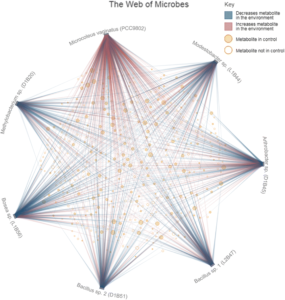
BMC Women’s Health: Use of emergency contraception among women with experience of domestic violence and abuse: a systematic review

Women who are subjected to domestic violence and abuse (DVA) are at a higher risk of unintended pregnancies and abortions, especially those women submitted to reproductive coercion by their male partners. The WHO and NICE guidelines for professional health care providers recommend that women who present clinical associations of DVA are asked about safety in their relationship and at home. This systematic review by Lewis et al. published in BMC Women’s Health evaluates the association between exposure to DVA and emergency conception.
The systematic review includes 6 studies that involved 15,297 women in total. Four of these studies provided evidence of an association between use of emergency contraception and DVA. Especially younger women from high- and middle- income countries exposed to DVA are more likely to use emergency contraception compared to other women.
The researchers suggest that a request for emergency contraception can be an indicator of DVA. They recommend that each emergency contraception consultation should be used to inquire about safety in relationships and at home, and that primary providers of emergency contraception should provide a display of information on DVA and local DVA services.
BMC Plant Biology: AgriSeqDB: an online RNA-Seq database for functional studies of agriculturally relevant plant species

RNA-sequencing is a popular technology for genome-wide transcriptional profiling. However, RNA-sequencing data is typically deposited in text and/or table-based files that are difficult to analyse and visualize for researchers who lack extensive computational expertise. The ArgiSeqDB tool developed by Robinson et al., presents user-friendly public portal that allows access, analysis, and visualization of tissue- and cell-specific transcriptome data-sets from multiple agricultural crops.
In BMC Plant Biology AgriSeqDB is described as an important data-reuse tool for plant biologists, as it allows the user to visualize and compare transcript expression across different samples. The database currently contains RNA-sequencing results from different tissues and cell-types, and future developments will include transcriptome data from single-cell RNA-Seq. All source code is freely available for reuse by advanced users.
BMC Biotechnology: Development of a vitrification method for preserving human myoblast cell sheets for myocardial regeneration therapy

Clinical studies have demonstrated that regenerative therapy of weakened heart muscle using skeletal myoblast sheets can be an effective therapy for people suffering from ischemic cardiomyopathy. However, the application of this therapy has been limited due to the requirement of in-hospital cell processing centers and the time-consuming process of preparing cell constructs. In a study published by BMC Biotechnology, Ohkawara et al., describe the development of a method that allows preservation of the myoblast cell sheets, to allow wide application and industrialization of the implementation therapy.
The researchers have found that vitrification, a process in which cells are exposed to a high concentration of cryoprotectant followed by extremely fast cooling in liquid nitrogen, is an effective method for the preservation of the myoblast cell sheets for up to 3 months. Although the cell viability was lower in the vitrification group compared to the fresh group, the improvement in cardiac function and angiogenesis was highly similar in both groups, suggesting that cell sheets maintain angiogenic function after vitrification.
BMC Neuroscience: Trans-cranial focused ultrasound stimulation of motor cortical areas in freely-moving awake rats

Brain stimulation techniques have contributed to our current understanding of neural and neurological function, and they have offered non-pharmacological options for the treatment of neurological disorders and neuropsychiatry. One of these brain stimulation techniques, trans-cranial focused ultrasound (tFUS), is a non-invasive technique for the focal delivery of mechanical pressure waves. These pressure waves can reach deep brain areas as well as cortical areas with high spatial selectivity.
In a paper recently published in BMC Neuroscience, Lee et al., describe a tool that allows tFUS to be applied to un-anesthetized, freely moving small animals, using wearable tFUS headgear. The ability to apply tFUS to un-anesthetized animals provides opportunities for investigations into neurological activities that cannot be investigated in anesthetized animals, such as socio-behavioral activities and epilepsy.
BMC Evolutionary Biology: Evolution within a language: environmental differences contribute to divergence of dialect groups

When counting separate dialects, more than 7000 languages exist worldwide. Although factors that contribute to the spatial segregation of the speaker populations have been suggested, the relative contribution of each factor to language diversion has not been quantified. In a study recently published by BMC Evolutionary Biology, Honkola et al., describe the early stages of dialect divergence, with a special focus on ecological settings.
Although geographical distances separating speaker populations contribute to the divergence of dialects, the current study indicates that mere differences in environmental conditions and related adaptive processes have a larger role in divergence of dialect groups than geographical distance even within area of modest environmental variation.
BMC Health Services Research: “I will not stop visiting!” a qualitative study of community health workers’ reluctance to withdraw household support following the end of a community-based intervention in Zimbabwe

Community health worker (CHW) programs play an important role in the HIV service delivery in middle- and low-income countries. However, poor remuneration, lack of career opportunities and concerns of exploitation of CHWs are a growing concern. In addition, little attention has been devoted to the effects of the withdrawal or exits of CHWs from clients and families following the end of a fixed-term intervention, or the end of a research study. In a study recently published in BMC Health Services Research, Busza et al., examine the experiences of CHWs following withdrawal from clients and families.
The study shows that CHW can develop close personal relationships with the households they visit. Following the withdrawal of a household, some CHW chose to continue the relationships with the families in their own time, and at their own expense. These CHWs sustain the emotional labor but now lack the support previously provided by the research programs they were involved with. The authors point out that CHWs build trust with community members, and make interventions more acceptable by the local community. They stress that regular exits or withdrawals from families with whom they have established close bonds may lead to demoralization, may affect the feasibility of long-term programs.
BMC Microbiology: Web of microbes (WoM): a curated microbial exometabolomics database for linking chemistry and microbes

Metabolic research has been accelerated by advances in mass spectrometry techniques. Although there are data repositories for a wide variety of metabolic databases, currently no data repositories are available for exometabolomic studies. A recent paper published in BMC Microbiology describes the Web of Microbes (WoM) database, developed by Kosina et al. This web-based data visualization tool and data repository for mass spectrometry based exometabolomics studies enables the linking of microbes, metabolites and environments.
The web interface displays information from a three-dimensional data-set, where exometabolomic observations are defined by unique combinations of metabolite, environment, and organism data. WoM is hosted at the National Energy Research Scientific Computing Center (NERSC), which should allow the tool to growth both in volume and features. The application uses JavaScript and runs on all modern web browsers.
TERMIS 2018: World Congress of the Tissue Engineering and Regenerative Medicine International Society
Earlier this month, BMC Biomedical Engineering Editor Alexandros Houssein attended the TERMIS 2018 conference in Kyoto, Japan. This year’s theme was “Integration of industry, government, and academia for regenerative medicine”. For more information about this conference, please read Alexandros’ blog here.
Comments